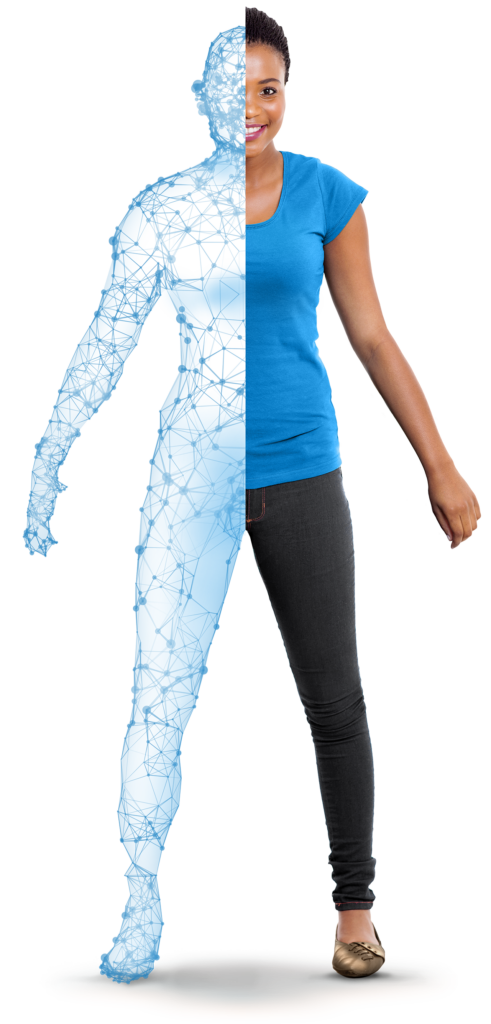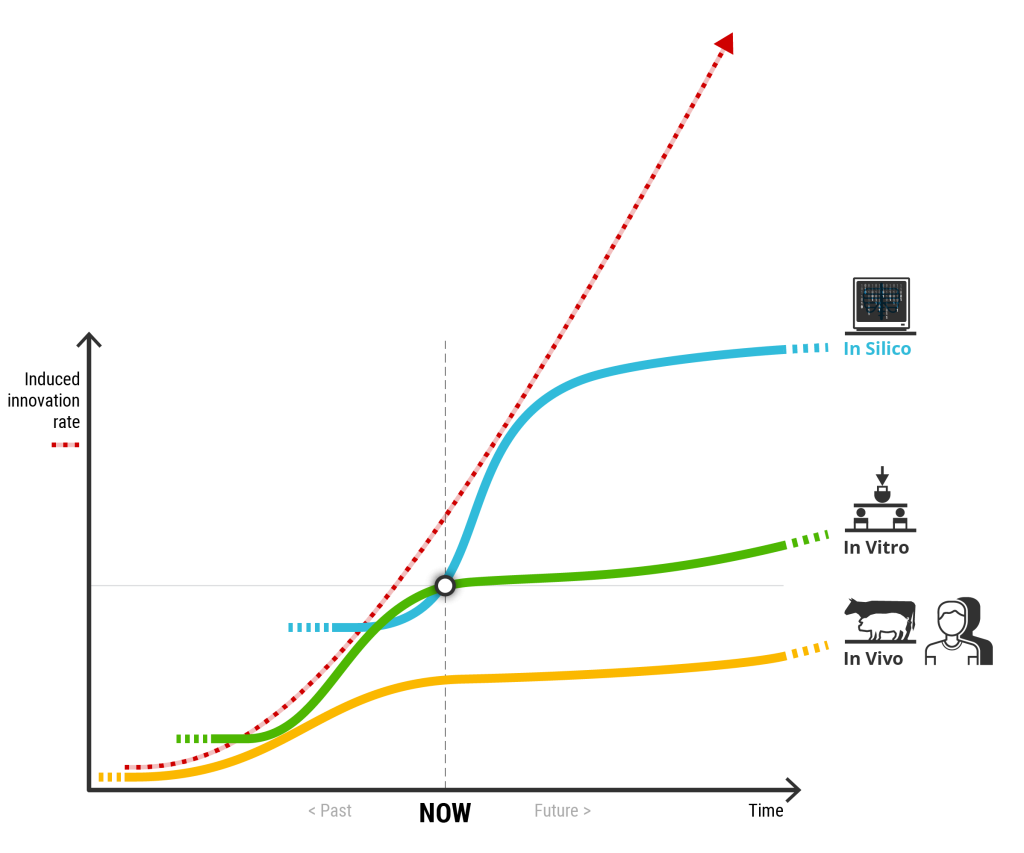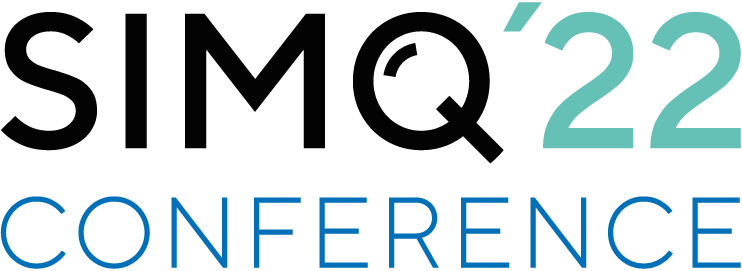in silico medicine
Digitization is expanding the boundaries of medicine and medical technology
Computer modeling and simulation (CM&S) or in silico technologies combine computational tools with biology to perform complex analyses of life science applications in an intuitive, accurate, and reproducible manner.

An in silico model in medicine involves modeling, simulation and visualization of a medical issue. Modeling represents the elements of a biological system, simulation tries to show in a realistic way how this system develops over time under the influence of given stimuli. Visualization presents predictions in graphical form.
Key technology for the future of medicine

in vivo – in vitro – in silico
In the future, the use of ethically difficult animal and human trials will be shifted to the level of the virtual trial setup, including virtual patients. This will provide the opportunity to safely test and adapt product developments at an early stage. Accelerated medical product approval and efficient market monitoring of products already on the market thus become possible and can also be planned in terms of time.
With in silico, even better diagnoses and therapies will be possible in the future. The use of simulation prior to surgery and the representation of physical processes in the digital patient enable patient-specific and thus more efficient treatments.
Benefits of in silico medicine
in silico medicine improves diagnoses and therapies and
- Significant savings in time and effort throughout the product life cycle
- Make clinical research, diagnoses, and therapies safer, faster, and more efficient
- Accurate repeatability of virtual experiments and their results as opposed to in vivo or in vitro tests
- Almost infinite variation in the test parameters
- Ethically unacceptable experiments become feasible with in silico methods
- Additional information through the simple use of digital twins
- More accurate diagnoses through patient-specific analysis and visualization
- Faster recovery of your patients due to shortened surgery times/minimally invasive surgery
Get more details
In silico describes the evolution of medicine and is seen as the next evolutionary step: from in vivo, i.e. experiments in the human body, to in vitro, i.e. in the test tube, now comes in silico – experiments performed in silicon, i.e. on the computer.
The emergence of in silico medicine is the result of advances in medical informatics over the past twenty years. Scientists define “in silico” as the modeling, simulation and visualization of biological and medical processes on a computer.
Digitization is expanding the boundaries of medicine and medical technology. Computer modeling and simulation (CM&S) or in silico technologies combine computational tools with biology to perform complex analyses of life science applications in an intuitive, accurate, and reproducible manner.
An in silico model in medicine involves modeling, simulation and visualization of a medical issue. Modeling represents the elements of a biological system, simulation tries to show in a realistic way how this system develops over time under the influence of given stimuli. Visualization presents predictions in graphical form.
With this new technique, experimental manipulations can be made that are not feasible or impossible in real experiments with in vivo and in vitro studies, without losing experimental control: in silico is thus the perfect complement to in vivo and in vitro studies.
The in silico revolution will drive innovation in medicine and pharmaceuticals, generating solutions that will allow us all to live longer and better at reasonable costs.
This makes in silico very important for the personalized medicine of the future.
With in silico medicine, it is possible to replace real people in studies with computer simulations using digital patients and predict how real people will respond to a therapy. These medical simulations make clinical research, diagnoses, and therapies safer, faster, and more efficient because initial assessments of safety and efficacy can be made at a very early stage that would otherwise require humans and animals.
There are a variety of potential applications for in silico models:
- In silico modeling is used in the pharmaceutical industry to calculate how the pharmacology and pharmacokinetics of a compound determined in laboratory and animal tests might act in humans. In addition, complex computer simulations of the physiology of humans and animals are used to make predictions about how a compound will act in humans, even before initial data from tests in humans are available. In silico models can thus be used to test entire populations virtually for drugs or various diseases without risk, and to improve the efficacy of drugs in a targeted manner.
- In silico models can also be used, for instance, for digital verification of implants or prostheses (example Simq VIT). By virtually applying physiological or standardized loads to a patient-specific situation, the performance and safety of an implant can be tested quickly and efficiently using objective criteria before it is implanted in the patient. The patient thus receives an implant that is perfectly tailored to his or her anatomy. In addition to the doctors and implant manufacturers, the patient also benefits from increased quality and safety.
- Another possibility is the use of in silico models for surgical planning. Here, medical software is used to optimize the operation based on simulation in order to achieve the best possible results for the patient while minimizing risks (example Simq RPE).
The adaptation of in silico medicine continues to gain momentum. Computer modeling and simulation (CM&S) has been identified as a priority by the FDA. The FDA is promoting the use of in silico clinical trials using computer modeling and simulation (CM&S), which tests a product on a cohort of virtual patients, which can replace or supplement clinical trials.






